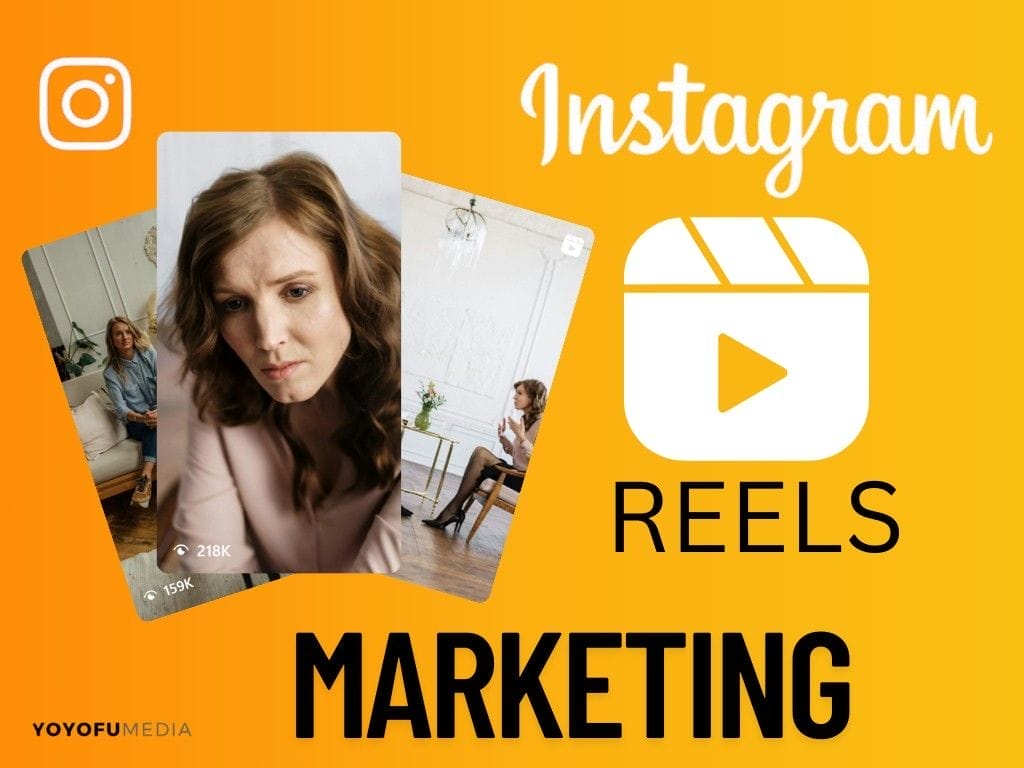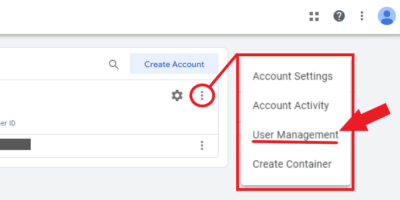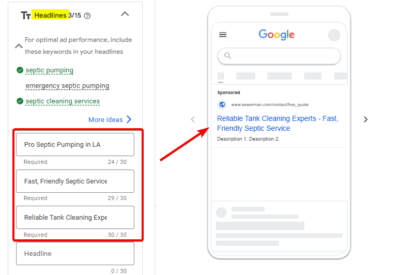Are you a psychiatrist struggling to connect with potential patients in today’s digital world, facing challenges like stigma, information overload, and the need to build trust online?
This Instagram Reels Marketing for Psychiatrists guide provides actionable strategies for creating compelling short-form video content, offering a dynamic solution to break down barriers, establish your expertise, and ethically and effectively grow your practice.
Table of Contents
ToggleWhat is Instagram Reels?
Instagram Reels is a fun feature within the Instagram app where you can make and watch short, up-and-down videos, now up to 90 seconds long. These videos are made to be interesting, creative, and easy to share with others. A big part of Reels is the cool tools it offers, like lots of music to choose from, fun visual effects, text you can add to the screen, and interactive stickers.

You can easily edit your Reels right inside the Instagram app, so it’s not hard to make your videos look good. Plus, Instagram has a special “Reels” button where people can find new videos, even from people they don’t follow. This means your videos can reach a lot more people. The way Instagram shows videos often favors Reels that keep people watching and having fun, which helps them get seen by more users.
Why Instagram Reels Marketing for Psychiatrists?
In getting the word out about your work, Instagram Reels are really helpful. They grab people’s attention and can reach many users, you can use them to share information in a new and interesting way. This can help you build trust, share helpful ideas about mental health, and ultimately help your practice grow online.
Breaking down stigma and normalizing mental health discussions
Increased Accessibility — Short, engaging video content on Reels can reach individuals who might feel intimidated by traditional articles or formal discussions about mental health. The less formal nature of the platform can lower the barrier to entry for those seeking information or support.
Instagram Reels Post That Resonates With The Psychiatrist’s Audience:

Relatability and Shared Experiences — You can use Reels to share relatable anecdotes, address common anxieties, and highlight the universality of mental health challenges. Seeing a professional discuss these topics openly can normalize seeking help and reduce feelings of isolation.
Psychiatrist Sharing on Instagram Reels The “Weird” Things She Does:

Myth-Busting in an Engaging Format — Reels are ideal for quickly debunking common myths and misconceptions surrounding mental illness in a visually appealing and easily shareable way, contributing to a more informed and accepting public discourse.
Psychiatrist Discussing Common Misconceptions:
Starting Conversations — Thought-provoking Reels can encourage viewers to comment, share their own experiences, and engage in open discussions, fostering a sense of community and reducing the silence around mental health.
Instagram User Sharing A Friend’s Experience on Schizophrenia On a Psychiatrist’s Instagram Reel Post:

Reaching younger demographics who are active on Instagram
Platform Preference — Instagram, and particularly Reels, are highly popular among younger adults (Gen Z and Millennials), who are often more comfortable seeking information and engaging with professionals online. This allows you to connect with a demographic that might be less likely to engage with traditional media.
Visual Learning and Short Attention Spans — The fast-paced, visual nature of Reels caters to the learning styles and attention spans of younger audiences, making complex information more digestible and engaging.
Trend Adoption — By participating in relevant trends and using popular audio, you can increase the discoverability of your content among younger users who actively engage with these features.
Early Intervention and Awareness — Reaching younger demographics early can promote mental health awareness and encourage help-seeking behavior before issues escalate.
A Psychiatrist Sharing To Instagram Users How Negativity Impacts the Brain:
Building a personal connection and fostering trust before the first appointment
Humanizing the Professional — Reels allow you to showcase your personality, communication style, and empathy in a way that static profiles or text-based content cannot. This human touch can make them feel more approachable and less intimidating.
“Seeing is Believing” — Potential patients can get a glimpse of your demeanor, office environment (if appropriate and ethical), and how you communicate, fostering a sense of familiarity and comfort before an initial consultation.
A Psychiatrist Giving A Glimpse of Her Office Environment Through Instagram Reels:
Demonstrating Expertise Authentically — By sharing valuable insights and practical tips in your own voice and style, you can demonstrate your expertise and build confidence in your abilities.
Addressing Fears and Misconceptions — Reels can be used to directly address common anxieties or misconceptions about therapy and psychiatric treatment, helping to alleviate fears and build trust proactively.
A Psychiatrist’s Instagram Reels Post on How Her Patients Conquer Their Biggest Fears:
Struggling to reach people who need your help? We make Instagram Reels marketing easy for you.
Growing Influence of Social Media in Mental Healthcare
Social media clearly affects how people find information, and this includes healthcare. Many now use online platforms as their main way to get health info, especially about mental health.
How Often People Look for Health Information Online
In the US, the number of people who went online first for their health questions went up from about 61% in 2008 to around 74% in 2017. Also, many people who look for health info online do it often – more than 60% search at least once a week, and a good number do it several times a day.
How Visual Content Builds Trust with Patients
Visual content, like Instagram Reels, is key in building trust. You can show your skills and personality in videos.
Instagram Reels help you share your knowledge and give a peek into your work. This makes people feel more at ease and informed about getting help.
Setting Up Your Professional Instagram Account
If someone just finds you on Instagram, your account makes the first impression. So, make it look good and smart so people trust you and the right customers come in.
1. Profile Picture: Visual Representation of Your Practice
Your profile picture is your visual handshake. Consider these options and their impact:
- Professional Headshot — A clear, well-lit headshot conveys professionalism, approachability, and personal connection. Choose a photo where you look warm, confident, and trustworthy. This option is ideal for solo practitioners or those wanting to emphasize the individual connection. Ensure the background is clean and uncluttered.

- Practice Logo — If you are part of a group practice or have a well-established brand, your logo can reinforce brand recognition and professionalism. Ensure the logo is high-resolution and easily recognizable even in a small circle. This option is suitable for larger practices wanting to build brand identity.

- Hybrid Approach — In some cases, an image representing your practice alongside a smaller, professional headshot (as part of the overall branding) might work, but prioritize clarity and recognition.
Recommendation: For most individual psychiatrists, a professional headshot is generally more effective for building that initial personal connection important in mental healthcare.
2. Username: Making Yourself Memorable and Searchable
Your username (@handle) should be easy to remember, spell, and ideally reflect your name or practice name. Consider these tips:
- Clarity and Simplicity — Aim for a username that is straightforward and avoids unnecessary numbers or complex characters.
- Brand Consistency — If you have a website or other social media profiles, try to use a consistent username across platforms for brand recognition.

- Searchability — Incorporate keywords that potential patients might use when searching for a psychiatrist in your area or with your specialization (example: @DrJanePsychiatrist, @AnxietyTherapyLA). However, prioritize clarity over keyword stuffing.
- Availability — Check if your desired username is available across Instagram and other relevant platforms.

- Professionalism — Avoid overly casual or personal usernames.
Examples:
- @[YourPracticeName]Psychiatry
- @Dr.[YourSurname]MentalHealth
- @AnxietySpecialist_[YourCity]
3. Bio Optimization: Your Digital Elevator Pitch
Your bio is a short but powerful space to communicate who you are, what you offer, and how to connect. Go beyond basic information by including:
- Clear Identification — State your name and credentials (example: “Dr. [Your Name], Board-Certified Psychiatrist”).

- Specific Areas of Expertise — Highlight your specializations or the conditions you treat (example: “Specializing in Anxiety Disorders, Depression, and PTSD”). This helps attract individuals seeking specific help.
- Target Conditions/Audience — Clearly indicate who you help (example: “Helping Adults Navigate Anxiety and Stress,” “Support for Teens and Young Adults Facing Depression”).
- Unique Selling Proposition (USP) — What makes your practice stand out? Briefly mention your approach, philosophy, or unique services (e.g., “Compassionate and Evidence-Based Care,” “Integrative Approach Combining Medication and Therapy”).
- Compelling Call to Action (CTA) — Tell people what you want them to do. Use action-oriented language (e.g., “Book a Consultation,” “Learn More About My Services,” “Visit My Website”).

- Direct Link (Using Link-in-Bio Tools) — Instagram only allows one clickable link in your bio. Utilize a link-in-bio tool (like Linktree, Bio.fm, or Milkshake) to create a landing page with multiple relevant links, such as:
- Your website (for detailed information and booking).
- Contact information (phone number, email).
- Link to schedule a consultation.
- Links to other relevant resources or social media platforms.
Example Bio:
- Dr. Sarah Chen, MD | Board-Certified Psychiatrist
- Specializing in Anxiety & Depression in Adults
- Compassionate, Evidence-Based Treatment
- ➡️ Book a Free 15-Minute Consultation: [Your Link-in-Bio Link]
- www.yourpracticewebsite.com
Want more patients through fun Instagram videos? Talk to our experts for a free Reels strategy session designed for you.
Instagram Reels Marketing for Psychiatrists: Core Strategies
Understanding how you can share and why short videos get people interested help you use Instagram effectively. Let’s learn about Regular Posts (Feed), Stories, Highlights, and Reels.
Differentiating Reels, Stories, Highlights, and Regular Posts
Instagram lets you share in different ways, and each one works a little differently to reach people and get them interested:
Regular Posts (Feed)
These are still pictures or videos (up to 60 minutes long, but shorter ones are usually better). They show up on the main page people see and on your own page.
Instagram Posts Sample:

Important Note: You can see Instagram Reels within the regular Posts (Feed) section. But, regular Posts will not appear in the dedicated Reels section.
- How Many People See Them — Mostly your current followers will see these. But if your post gets a lot of likes and comments, Instagram might show it to more people on the “Explore” page if they like similar things. Instagram looks at how often people talk to you, how many likes and shares your post gets, and if people usually like your stuff.
- How People Interact — People can write comments and save these posts, which shows they really like them. But if the picture or video isn’t interesting, people might just keep scrolling.
Stories
These are photos or short video clips (up to 15 seconds each) that disappear after one day. You can find them at the top of the page. You can add fun things like polls, quizzes, question boxes, and links (if your account can).
Instagram Story Sample:

- How Many People See Them — Usually, only your current followers see these. Instagram shows stories from people you talk to a lot first. If you add where you are or use hashtags, a few more people who don’t follow you might see them.
- How People Interact — Stories are great for quick chats, polls, and getting direct messages. They only last a day, so people interact quickly, but they don’t help build your page as much as Reels or posts do.
Stories are only available to see for one day. After that day, they disappear.
Instagram Story Not Available (After One day) Sample:

Highlights
Highlights are like permanent folders of important things people might want to know about your practice. They stay on your page even after your regular Stories disappear after one day.
Instagram Highlights Sample:

Here are some ideas for what to put in your Highlights:
- About Us/Meet the Doctor(s) — You can save short videos or picture stories that introduce yourself and your team. Talk about your background and what you specialize in. This helps people feel more comfortable with you.
- What You Offer (Services) — Make a Highlight that lists the different ways you can help people (like talking therapy, medicine help, group sessions, or help with specific problems like anxiety). Use simple words and maybe short videos explaining each.
- Good Things People Say (Testimonials) — If you have permission and don’t share anyone’s name, you can save positive things people have said about your practice. This can make new people trust you more. Use simple text or nice-looking pictures with the quotes.
- Common Questions (FAQ) — Save stories where you answer questions people often ask, like how to make an appointment, if you take their insurance, or what therapy is like. Short video answers or simple text lists work well.
- How to Contact You/Book — Make it easy for people to find your phone number, email, website, and how to make an appointment. You can save a Story with all this info.
- A Look Inside (Behind the Scenes) — You can save stories that show your office or things you do professionally (like going to a meeting). This can make your practice feel more real.
- Helpful Information (Resources) — Save stories where you share tips for feeling better, links to good websites, or info about events.
Tips for Good Highlights:
- Nice Cover Pictures — Use attractive and clear pictures for the front of each Highlight so people know what’s inside.

- Easy Titles — Give your Highlights short and clear names so people can find what they need quickly.

- Put Important Things First — Arrange your Highlights so the most useful info (like what you offer and how to contact you) is at the beginning.
- Keep Things Up-to-Date — Check your Highlights regularly to make sure the information is still correct. You can add new stories to them or make new ones when you need to.
Reels
These are short, up-and-down videos (up to 90 seconds) made to be fun and help new people find you. They have their own button and are shown a lot on the “Explore” page, so people who don’t follow you can see them. You can add music, effects, and edit them easily.
Instagram Reels Sample:

Important Note: The Reels section is specifically for Reels, while the Posts section can contain both traditional posts and Reels.
- How Many People See Them — Made to reach lots of people, even those who don’t follow you. Instagram looks at what kind of Reels people watch, like, share, and comment on, if the Reel is interesting, and even if the music or video style is popular. Good Reels can be seen by many people.
- How People Interact — Reels are good for getting new followers and getting likes, shares, and saves because they are fun and easy to find. People often comment, but because they are fast, the talks might not be as deep as on regular posts.
Instagram Reels are really helpful because Instagram often shows them to people who don’t follow you.
Why Reels Work: The Psychological Impact of Short-Form Video
Instagram Reels are popular and work well because of how our brains handle information and enjoy online content:
- Short Attention Spans Online — Now, there’s so much information around us that people pay attention for shorter times. Short videos like Reels help with this by giving quick bits of interesting stuff in a small amount of time. This makes it easier for people to stay focused and understand the main point before they lose interest.
- We See Things Faster Than We Read — Our brains understand pictures and videos much faster than words. Reels use this by mixing what you see with what you hear (music, talking). This makes it more interesting and easier to remember.
- Feeling Good Quickly — When we see lots of new and fun things on Reels, our brain releases a chemical called dopamine. This chemical makes us feel happy and rewarded. Because of this good feeling, we want to keep watching and interacting with Reels.
- Short and Easy to Remember — It might seem strange, but short videos can help us remember things better. Reels usually focus on just one main idea, so it’s easier for people to understand and remember what’s important compared to long, complicated videos.
- Feeling Connected — The music, pictures, and real ways people talk in Reels can quickly make us feel emotions. This emotional connection can help people feel closer to the person making the Reel and trust them, even if they haven’t met in person.
- New and Popular Things — Reels often use what’s new and popular, like trends, challenges, and music everyone is using. This newness grabs our attention and makes the content feel important and fun, so we’re more likely to share it and reach more people.
Step-by-Step Process for Creating Your First Instagram Reel
Making your first Instagram Reel needs careful thought. You want to be creative but also responsible and professional.
1. Planning What to Say (Think Carefully First)
It’s really important to plan. What you say should always be the right thing to do (ethical) and should help the people who might watch (your potential patients).
- Being Ethical First — Always review your content ideas through the lens of your professional ethical guidelines (example: APA, state licensing boards). Ensure you are not sharing confidential information, offering personalized advice in a public forum, or creating content that could be misconstrued as a therapeutic relationship.
- Thinking About Patients’ Needs — When you plan, think about what questions people often ask or what worries they have that you see online (but don’t share anyone’s private details). Think about:
- Common Wrong Ideas: What are some common misunderstandings about mental health problems or how people get help?
- Questions People Ask: What do people usually ask when they first talk to you?
- Stress and How to Deal: What are some everyday things that cause stress, and what simple ways can people handle them?
- Making Help Less Scary: How can you gently explain what therapy or mental health check-ups are like so people don’t feel so worried about getting help?
- Simple Ways to Feel Better: What easy, general tips can you share to help people feel better mentally?
- Making it Worth Watching — Make sure your video will really help people. Will they learn something, get a useful tip, feel less alone, or know how to get help?
- Psychiatrist Giving Advice:

- Psychiatrist Giving Advice:
- Keep it Short —Remember that Reels are short videos. Focus on just one main idea in each Reel so it’s easy to understand and has the most impact.
2. Tips for Making Your Videos Look Good
How your video looks really affects how people see you as a professional and if they keep watching.
- How You Look in the Video (Framing) — Pay attention to where you are in the video box. Showing from your chest up often feels friendly. Make sure your face has good light on it and is in the middle. Don’t have things behind your head that might distract people.
- What’s Behind You (Background) — Choose a background that is simple and doesn’t have too much stuff that could take attention away. A plain wall, a bookshelf with some nice things (but not too personal), or your office can work well. Don’t use backgrounds with lots of patterns or personal things.
- How Bright the Video Is (Lighting) — Good light is important for looking professional. Light from a window (facing you, not behind you) is usually best. If you use lamps, make sure the light is soft and even, not too dark or with strong shadows. Special video lights can also be helpful.
- Keeping the Camera Still (Stability) — Use a small stand or put your phone on something steady so the video doesn’t shake. Shaky videos can look unprofessional and make people not want to watch.
- Instagram Reels Sample for Stability and Audio Clarity:
- Instagram Reels Sample for Stability and Audio Clarity:
- How Your Voice Sounds (Audio Clarity) — If you can, use a small microphone that clips on your clothes. The microphone in your phone can sometimes pick up noise. Speak clearly and not too fast or too slow. Try recording a little bit to check how it sounds.
- Looking at the Camera (Eye Contact) — Look right at the camera lens as if you are talking to the people watching. This makes them feel like you are talking directly to them.
3. Making Your Reel Look Good (Editing)
Editing can make your video better, but for mental health, keep it simple and professional.
- Simple Changes Between Scenes (Subtle Transitions) — Use smooth and easy ways to go from one clip to the next (like just cutting or fading). Don’t use too many flashy or distracting changes that might take away from what you’re saying.
- Easy-to-Read Words (Professional Fonts) — If you add words to your video, choose fonts that are clean, easy to read, and look professional. Use the same font style for all your videos. Don’t use fonts that are too fancy or hard to read.

- Calm Colors (Calming Color Palettes) — If you add colors behind words or pictures, use colors that are calm and professional (like blues, greens, or soft colors). Don’t use colors that are too bright or clash.
- Words That Help (Strategic Text Overlays) — Add words to the screen to point out important things, say your main message again, or give a short summary. Keep the words short and easy to read. Make sure they don’t cover your face or important parts of the video.
- Music in the Background (Use Carefully) — If you use music, choose songs without words that are calm and don’t distract. The music should make your message better, not be too loud or sound unprofessional. Make sure you have the right to use the music.
- Instrumental Music Background Sample:
- Instrumental Music Background Sample:
- Your Logo (Subtle Branding) — You can maybe add your logo or practice name small at the end of the video, but don’t make it too big so it takes away from what you’re saying.
- Keep it Short (Conciseness) — Make your editing quick and make sure your video gets its point across in a good amount of time (try to keep people interested in the first 15-30 seconds).
Content Ideas That Resonate with Mental Health Audiences
Here are some ideas with clear examples for each type:
Teaching Videos
- Explaining Mental Health Problems Simply —Make short videos (under 1 minute) that explain things like anxiety (like a car alarm that’s too loud), depression (like feeling very heavy and sad for a long time), or ADHD (like having trouble focusing). Use simple comparisons and show pictures or animations if you can.
- Talking About Types of Therapy — Briefly explain what kinds of therapy like CBT (helps change negative thoughts), DBT (helps manage strong feelings), or mindfulness (helps you focus on the present) are.
- Explaining Medicines — Give general info about how different types of mental health medicines work (like helping with mood or anxiety) without saying specific drug names.
Videos That Correct Wrong Ideas and Fight Stigma
Make videos that talk about common wrong beliefs about mental illness (like it meaning someone is weak) and share positive messages about getting help.
Videos with Easy Self-Help Tips
Share simple, proven tips that people can do to manage stress (like deep breathing), sleep better, and handle their emotions (like doing things they enjoy).
Psychiatrist Giving Tips on How to Beat Monday Blues:

Videos That Show You’re Human
If it’s okay ethically, you could briefly introduce your team or show your office so people feel more comfortable. You can also share short, professional stories about why you help people with mental health (without sharing private details).
Let Us Help You Create Engaging Instagram Reels That Convert
schedule A Free Strategy Session Now!
Building Your Community and Engagement Strategy
Here’s how to talk to people who see your Reels and grow your online community:
Replying to Comments
- Offer examples of empathetic and professional responses.
Psychiatrist Replying to Instagram Reels Comment:

Knowing When to Talk Privately
How and Why: If someone shares a lot of personal details or asks for specific medical help, gently suggest talking offline. You can say, “This sounds like something that would be better to talk about privately. You can find how to contact my office on my page,” or “For more personal help, please contact us directly.” This keeps their info safe and makes sure they get the right kind of help.
Working with Other People/Groups
Ideas for Working Together:
- Make Reels with other therapists or counselors about different topics.
- Share info from local support groups or organizations that help with mental health.
- Do live Q&A sessions online with other experts.
- Share each other’s pages and videos so more people see them.
- Make a series of Reels with others about different mental health topics.
Using the Right Words (Hashtags)
Some Good Words to Use:
- #mentalhealth
- #anxietyhelp
- #feelingbetter
- #therapyworks
- #stressrelief
- [your city]mentalhealth
Measuring Success: Analytics for Your Reels Strategy
Here’s how to understand the numbers and see if your videos are helping your practice:
Understanding the Numbers and What They Mean for Your Goals:
Reach
This is how many different people saw your Reel.
- What it means for you: More reach means more people know about you, which can lead to new followers and maybe new patients.
Impressions
This is the total number of times your Reel was seen (one person might watch it more than once).
- What it means for you: Shows how often your videos are being viewed.
Engagement (Likes, Comments, Shares, Saves)
This is how many people liked, commented, shared, or saved your Reel.
- What it means for you: High engagement means people really liked your video and found it helpful. This can also make Instagram show it to even more people.
Follower Growth
See if you get more followers after you post certain kinds of Reels.
- What it means for you: More followers means you’re building a bigger audience.
Website Clicks (from the link on your page)
If you have a link to your website on your Instagram page, see how many people click it after watching your Reels.
- What it means for you: This shows if your Reels are making people want to learn more about your services or book an appointment.
Profile Visits
See if more people visit your main Instagram page after watching your Reels.
- What it means for you: Shows that people are interested in learning more about you.
Messages/Questions
See if you get more direct messages or questions about your practice after you post certain Reels.
- What it means for you: This could mean people are interested in becoming patients.
Conclusion
If you want to connect with more people and help them with their mental health, Instagram Reels is a really useful tool. It lets you make short, interesting videos that can break down misunderstandings about mental health, teach people important things, and help them feel more comfortable reaching out.
But, if you need to get new patients quickly and regularly, Google Ads is a faster way. It helps you show up when people are searching online for a psychiatrist in their area, so you can connect with people who need help right now. Learn how you can run your Google Ads campaign: Google Ads For Psychiatrists.
Using Instagram Reels is really important for psychiatrists today because it lets you show your human side and connect with people in a way that’s easy to understand. Lots of people, especially younger folks, use Instagram and watch Reels, so it’s a great way to reach them. Plus, if your Reels are good, Instagram can show them to people who don’t even follow you yet. By sharing helpful and interesting videos, you can make a real difference, build trust, and encourage more people to get the mental health support they need.
Other Related Articles:
















